OUR PARISH HISTORY
St. Nicholas Ukrainian Catholic Church was established in 1910. The parish is presently located in a majestic structure, located on President Street in Passaic near the Clifton border. Over its one hundred years, it has been served by 29 pastors and has embraced four waves of Ukrainian immigrants, unifying the people of the parish and keeping the Ukrainian faith, traditions, music, culture, and spirit alive.
The conviction of heart was evident in the lives of our pioneering Ukrainian founders. What was holy in Ukraine had to be holy in America, and thus, they brought their Eastern Catholic Faith, (often referred to as the Ukrainian Greek Catholic Rite to distinguish it from Roman Rite Catholicism). Its rituals, traditions and customs, were all tightly woven into the immigrant identity.
The first noted Ukrainian-immigration to the United States began in 1870. By 1890, Ukrainian immigrants were recognized as an ethnic block. The early immigrants came from the Zakarpattia region of Ukraine. The Lemky, from the westernmost part of the country, soon followed. Those from Halychyna and Bukovyna began arriving in America later that decade.
In his journal, Reverend Oleksa Prystay, one of the parish’s first pastors, wrote that young missionary priests were sent to the United States of America thirty years after the first Ukrainian migration. This was not the case with other immigrants, like the Italians or the Irish. These ethnic groups arrived in America with their priests, with their intellectuals and teachers who helped organize societies and facilitated assimilation into American life. In contrast, the Ukrainian immigrant population was scattered; without spiritual, intellectual, or cultural leadership, it had to fend for itself. At times, this meant joining forces with other ethnic populations. In fact, the need for spiritual and cultural life moved these first émigrés to join other eastern European groups and establish mixed church communities.
Many of Passaic’s immigrants from the Zakarpattia region helped establish three churches within the city: in 1884, St. Michael’s Greek Rite Catholic Church on First Street; in 1902, Ss. Peter and Paul Orthodox Catholic Church (which initially belonged to the Newark Roman Catholic diocese then separated and took on Russian Orthodoxy), located on Third Street; and in 1903, St. Stephen’s Catholic Church, a Magyar parish on Second Street. All three parishes, within a quarter mile radius of each other, had a large population of Ukrainians, who were also known as Rusyny or Ruthenians. These were people who had no nation and who, because of illiteracy and lack of leadership, were themselves confused as to their ethnic origin. However, once priests from their homeland arrived, Ukrainians gravitated to their own unique culture, language, and worship traditions. It was at this time that a number of the members of Saint Nicholas Brotherhood of Ss. Peter and Paul Orthodox Catholic Church recognized their own roots and became instrumental in organizing ST. NICHOLAS UKRAINIAN CATHOLIC CHURCH. The First Divine Liturgy was celebrated by Rev. Kudsiu, in a hall on Lakeview Avenue in Clifton, New Jersey, Rev. Kudsiu served this small fledgling parish for only three months before being reassigned. During this time, Rev. Soter Ortynsky was elevated to the title of Bishop by the
Holy (Roman Catholic) See and was designated as the first Ukrainian Greek Catholic bishop to the United States (1907). Michael Tabachuk, one of the leaders of the fledgling parish, wrote a letter to Bishop Ortynsky, asking for spiritual direction and a priest for the Ukrainian faithful in Passaic. His Excellency, then the spiritual leader of the Ukrainian Catholic Diocese of Philadelphia, responded by assigning Rev. Oleksa Prystay, to the Passaic community. One of the missionary priests who had been commissioned by the Bishop of Lviv to build churches for the faithful in the United States (specifically Pennsylvania, New York, and New Jersey), Rev. Prystay arrived at the home of Mrs. Kostia Petryk in Clifton in July 1909.
On July 30, 1909 Alexander Pelak, Aftanaz Gadzejka, Alexander Chowanec, Constantine Petryk,
Flavian Kuzmiak, Paul Barna, Ambroze Zilich, John Shafran, and Adam Yaschyshak held their first organizational meeting as leaders of the new St. Nicholas Ukrainian Catholic parish. Almost all of these men were former members of the St. Nicholas Brotherhood of the Apostles Ss. Peter and Paul Orthodox Church. Thus began the history of Saint Nicholas Ukrainian Catholic Parish.
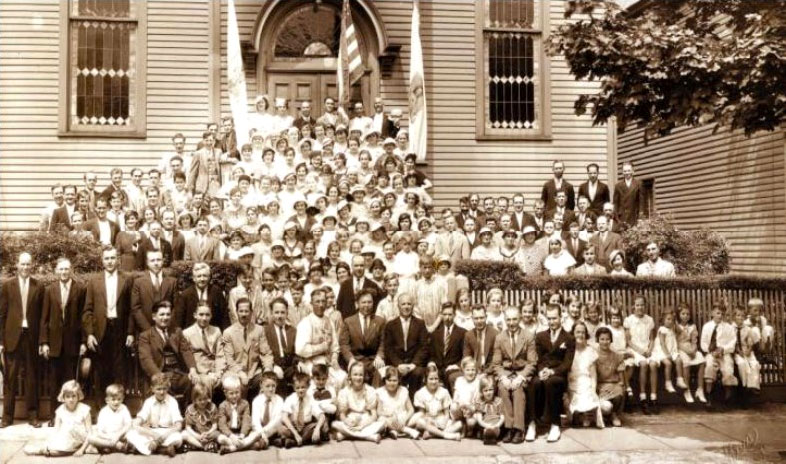
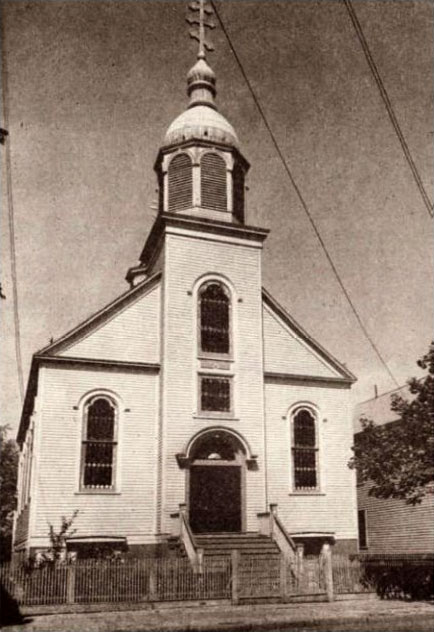
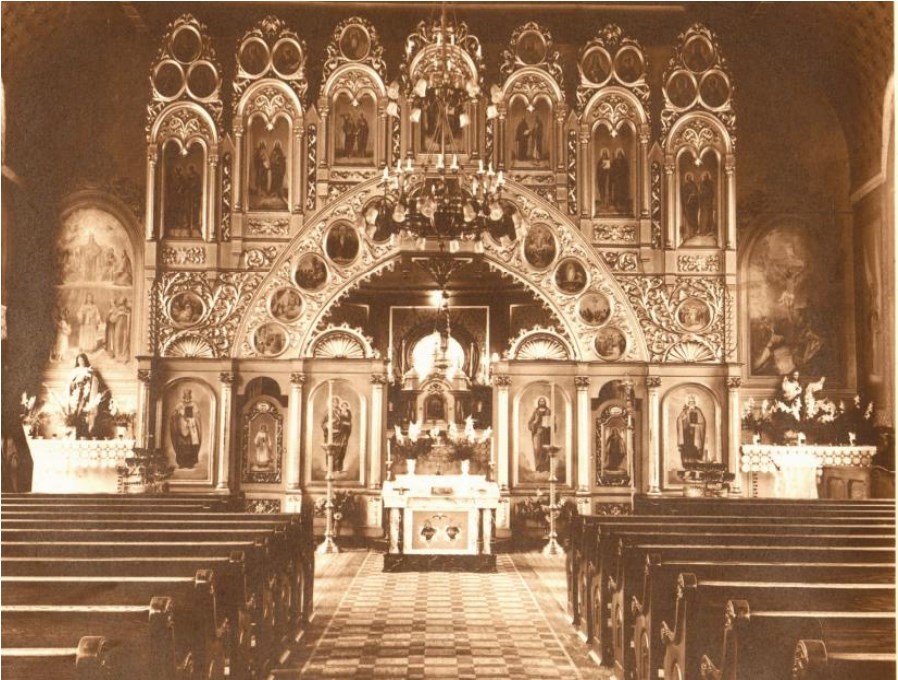
Rev. Prystay sought out 30 families and 15 single men and women in the surrounding Paterson and Singac areas and collected $30 in donations. The word spread, the numbers grew, and little by little the building fund grew. Rev. paid $2,000 for land on Van Buren Street and with Bishop Ortynsky’s approval, borrowed $6,000 from a Philadelphia bank. A builder (Mr. Koss) was hired to build the church at a cost of $12,500. The contract with the builder was signed on September 14, 1910, excavation of the foundation began on September 19, finished on September 26, and was blessed on October 8 of that year. Finding that the builder was ill equipped for the job of building the new church, Rev. Prystay assumed the role of contractor. Divine Liturgy was celebrated in the Reverend’s apartment those first few months until the building was completed. Subsequently, an adjacent home was purchased for $3,200 on September 19 of that same year to house the rectory and the pastor.
Coincidentally, Metropolitan Andrey Sheptytsky was attending a Eucharistic Congress in Montreal, Canada, during this time. Bishop Ortynsky of the young and struggling Philadelphia Ukrainian Catholic diocese sought assistance and advice, and at his invitation, the Metropolitan came to the United States. During a luncheon in Metropolitan Sheptytsky’s honor, held in neighboring New York City and hosted by Ukrainian clergy, Rev. Prystay invited the Metropolitan to come to Passaic to bless the cornerstone of the new church. And it was thus, that Metropolitan Andrey Sheptytsky blessed the cornerstone of Saint Nicholas Catholic Church on November 27, 1910. Within eight short months, the parish grew from 30 families in July 1909 to 221 families and 345 single men and women by March 1910. Sadly, on March 2, 1911, Rev. Prystay, who had accomplished so much during the eighteen months of his pastoral duties in Passaic, was reassigned.
[Historical note: reporters at the time took liberties with the spelling of ethnic names, and being unfamiliar with the differences among the existing Catholic churches, often reported facts erroneously] “In 1910 a group of members of St. Michael’s Greek Rite Catholic Church (Rev. Prystay wrote in his journal that the St. Nicholas Brotherhood of Ss. Peter and Paul Orthodox Catholic Church on Third St.) purchased three lots on Van Buren Street and erected a church at the cost of $15,000. Its first pastor was Kudsiu who remained here only a few months and was succeeded by Oleksa Prystai who occupied the pulpit for one year. The next pastor was Eustachius Sydorjak, who was pastor for seven years, and after him came Merenko, who remained with the parish for two years. The present pastor, Lewicky, was appointed to the church on November 1, 1919. The congregation recently purchased the old Calvary property at 120 President Street for $10,000 and after tearing down the old church erected a parish school and hall in its place for $35,000. The new building has been dedicated St. Nicholas Ukrainian School.
There are over 400 families connected with the church or over 2,000 souls. The various organizations include: St. Barbara, Immaculate Conception, Sacred Heart of Jesus, St. John the Baptist and the Sitch Athletic Society.
Rev. Lewiky was born in Galicia and took up his studies at the school of Lemberg East Galicia and the Vienna Theological Seminary. He was ordained thirty-two years ago at Stanislaus, Galicia, and came to America twenty years ago.
During the ensuing years the parish continued to grow, spurred by the influx of immigrants due to the outbreak of war (World War I) in Europe in 1914. In their native homeland there were also significant changes. Borders shifted, empires fell, and an independent Ukraine emerged, if only briefly, in January of 1918.
Soon the thriving parish saw increasing numbers of children among its members, and construction of St. Nicholas Ukrainian Parochial School was begun in the autumn of 1921. Money was borrowed from banks and church members to complete construction. Although originally intended as a day school, it functioned as an evening school. At the time child labor laws were non-existent and often children as young as 7 years old labored long hours to supplement the family income, leaving only evenings for education. In the school, children learned of their Ukrainian culture, music and Eastern Catholic worship traditions.
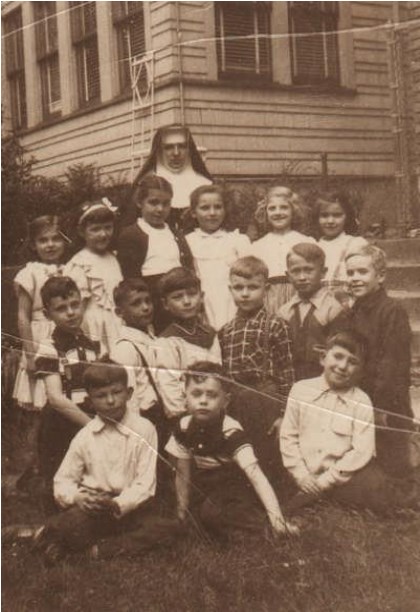
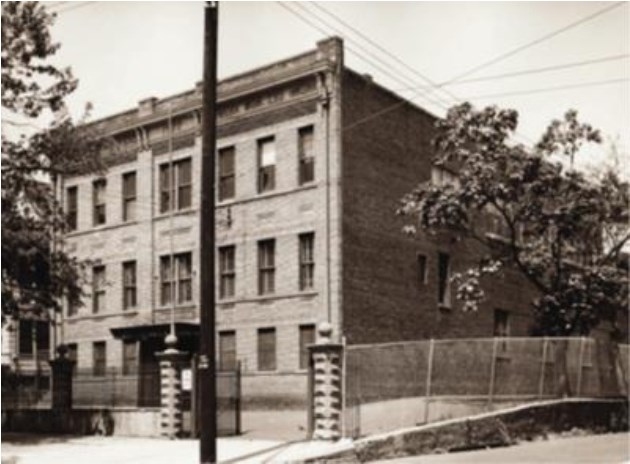
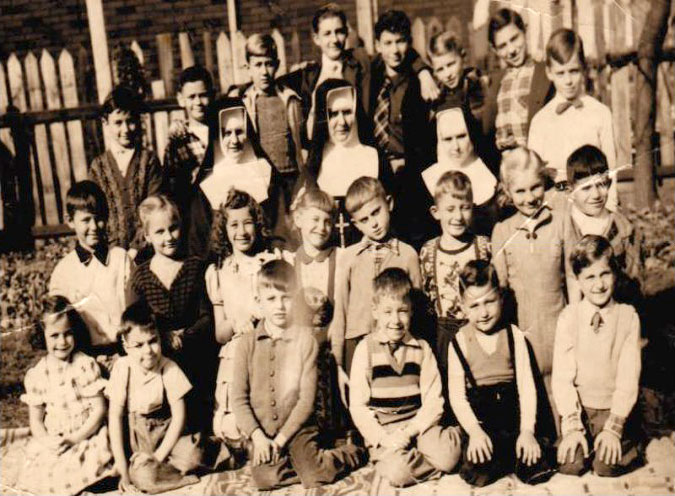
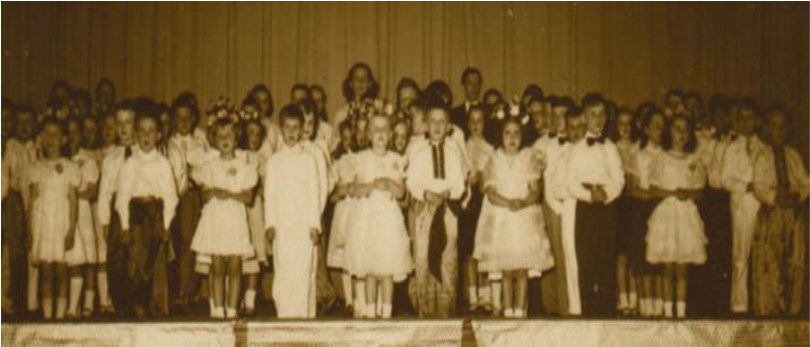
On November 30, 1921, the Passaic Daily News reported on the Most Rev. Andrey Sheptytsky’s second visit to America and, ultimately, to Passaic:
[Historical note: reporters at the time took liberties with the spelling of ethnic names, and being unfamiliar with the differences among the existing Catholic churches, often reported facts erroneously]
METROPOLITAN OF LEMBERG HERE SUNDAY
The Most Rev. Andrei Count Sheptycky, Archbishop of Lemburg and metropolitan of the Ukrainian Greek Catholic churches in Galicia, which since the country was then part of the republic of Poland and was described as Ruthenian, Poland, visited our parish during his two month visit to the United States. His Excellency came here to plead for victims of war, especially the plight of Ukrainians incorporated in Poland and Ukraine’s 20,000 orphans.
Metropolitan Sheptycky was received by President Harding and members of the US Cabinet the week before coming to our parish to plead his needs with the US government. While in Washington, he was shown every courtesy.
Metropolitan Archbishop Sheptycky stayed at our parish for two days. He conducted a mission service Saturday evening and pontificated at a solemn Liturgy on Sunday morning.
Our pastor, Rev. Lewicky invited prominent city leaders and presented His Excellency with a luncheon at the rectory after Liturgy. An evening concert was given at Holy Trinity Lyceum.
The St. Nicholas Church Band began the concert with the “Star Spangled Banner” after which the Rev. rector Lewicky greeted our guest with the foreword. The church chorus, under the directorship of S. Cimichud, and the children’s orchestra and church band, under the directorship of Professor Edelman, presented a selection of religious songs and Ukrainian folk songs.
However, by 1925 the parish debt was well over $65,000. The outlook appeared gloomy. Pastors came and went. Rev. Myron Danilovich arrived on September 1, 1925. During the next fifteen months, Rev. Danilovich worked hard to reorganize the parish and gathered money by house to house collections in an attempt to pay off the parish debts. Rev. Joseph Boyarchuk assumed responsibilities for our parish on November 1, 1926. It was the third year of the parish financial crisis. With great faith in God and unrelenting support of those parishioners who remained loyal to the parish during these trying times, Rev. Boyarchuk got to work. He organized the St. Nicholas Ukrainian Youth Club in hopes it would spark a deeper Catholic spirit in our parish. This youth organization, together with the Apostleship of Prayer of the League of the Sacred Heart, which had existed in the parish since its beginnings, cooperated with and supported the parish priest in all his efforts. The social, cultural, and athletic activities of the Youth Club contributed much toward uniting the new generation and kept this generation cognizant of their Ukrainian heritage. The Apostleship of Prayer Sisterhood and the Koshetz Choral Society were the only surviving organizations through the parish upheaval in the mid-1920s. Rev. Boyarchuk uplifted the spiritual life of the parish by sponsoring the church choir in the studies of liturgical music. Rev. Boyarchuk’s efforts to pay off the huge parish debts came to a halt when in 1929 the Great Depression swept through the country and continued until 1935. The parish was barely able to pay a portion of the interest on its various loans. Nevertheless, the debt was lowered by $9,000 leaving $59,000 due in 1935. Rev. Boyarchuk, having served our parish for nine years, was transferred elsewhere in March of 1935. Rev. Peter Sereda served our parish for one year, 1935, the year of the parish’s 25th Jubilee. He was succeeded by Rev. Antonin Ulanitsky, who served for two years. Rev. John Zacharko was appointed to our church on February 1, 1938. Despite the zeal and unselfish sacrifices of Rev. Zacharko, the financial situation of the church did not improve. Rev. Basil Feddish Ph.D. came to the helm on January 1, 1939, but due to illness, was relieved in April by Rev. Emil Ananevech and his assistant Rev. Myron Plekon.
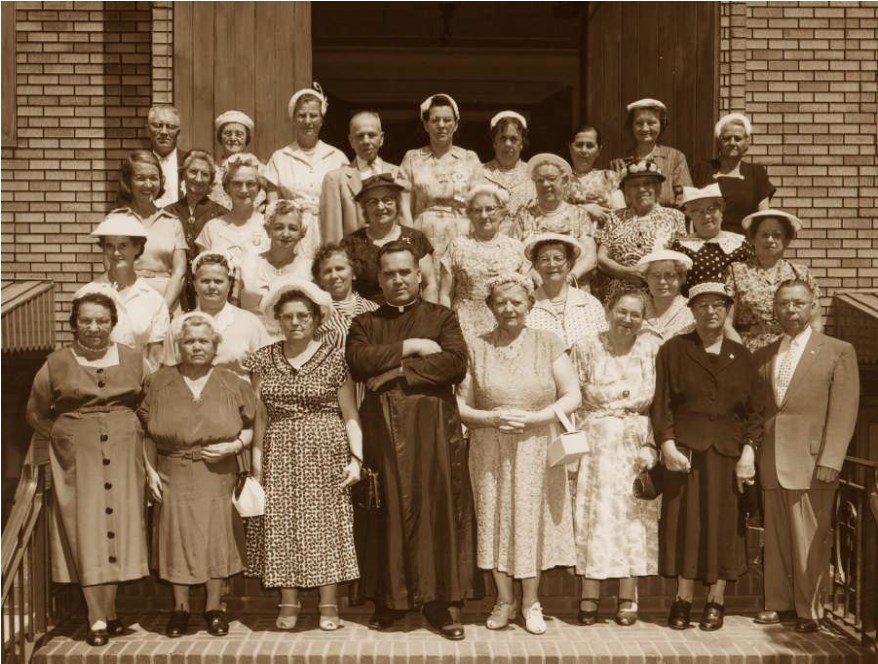
Apostleship of Prayer – 1950’s

Apostleship of Prayer – 1960’s
Soon after, the parish entered a new period of its history. Most Rev. T. H. McLaughlin, an official of the Roman Catholic Archdiocese of Newark, advocated, defended, and promoted the interests of the Eastern Rite- Churches. Bishop McLaughlin graciously used his offices to ease the parish’s precarious financial situation by loaning the parish money to make much needed repairs at a low interest rate. Thus, even though Rev. Ananevech was with the parish less than one year, he did much to improve its situation. The needed repairs were made. With his vision Rev. Ananevech together with the help of Mrs. Ann Skapiak, Mrs. Margaret Fortuna, and the other founding members (Mrs. Maria Maik, Mrs. Rose Leciston, Mrs. Julie Retkwa, and Miss Helen Ressetar) established the Ladies Auxiliary in 1939. These ladies took on the burden of fundraising projects for the parish during the war years.
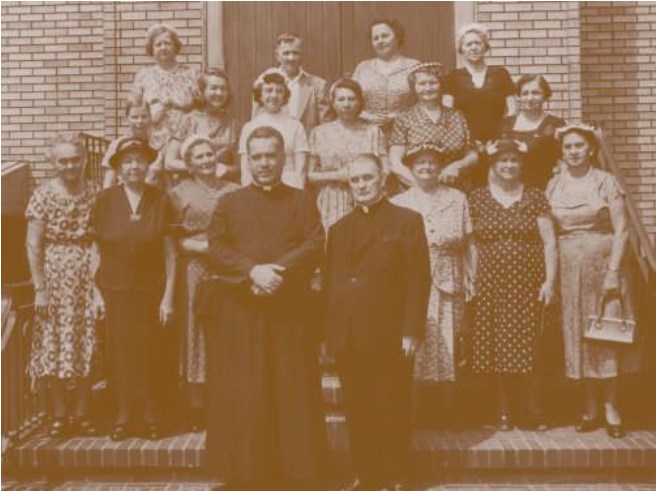
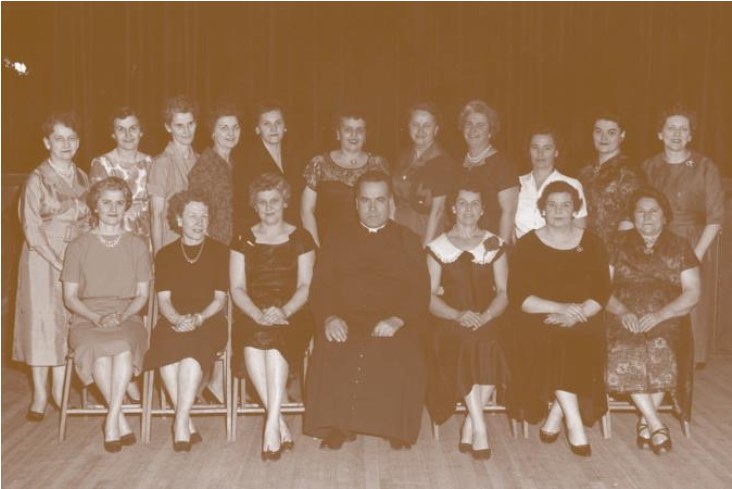
Rev. Vladimir Andrushkiw was appointed pastor of St. Nicholas in February 1940. Restorations continued; the interior of the church was painted, and a new main altar was erected. Rev. Andrushkiw contributed much toward the revival of true spiritual life in the parish, which in turn, encouraged parishioners to donate money toward the parish’s debts.
However, the St. Nicholas Youth Club’s membership dwindled and all of its activities were suspended because many of its members joined the armed services or worked to support the war effort. The parish responded wholeheartedly—giving 380 sons and daughters to the armed forces. Novenas to the Sacred Heart of Jesus for the intentions of the boys and girls in our country’s service were recited weekly in the parish. The faithful flocked to church every Monday evening to pray for the end of world hostilities and for the safe return of their loved ones. The Ladies Auxiliary deserves much credit for their spirit and for their devotion to those of the parish who were called to serve during this time. Throughout the war years, the Ladies Auxiliary maintained a perpetual vigil lamp before the altar to implore God’s protection for church members serving the country. They also hosted annual card parties and Chinese Auctions every year to help raise money for the parish’s needs. These activities also developed into great social and financial successes, helping to defray the parish’s continuing monetary needs.
It pleased the Lord, in His Divine Providence, to call ten of our enlisted unto Himself for their heavenly reward: Stanislaus Winiarski, John Harboy Joseph Bortnichak, Anthony Minko, Nicholas Capowski, Paul Pochmursky, Stephen Kucha, Anthony Hrubec (Battle of the Bulge), John Bulyn and Peter Yaciniak. Their names have been enshrined on a plaque in the church vestibule and their souls are commended to the Lord by the prayers of the faithful. At last the war ended. When the soldiers returned home, this energetic group of young ladies prepared a “Welcome Home” banquet reception. Held in June 1946, the reception is still vivid in the minds of our octogenarians. The Ladies Auxiliary was (and still is) an integral part of the St. Nicholas parish community.
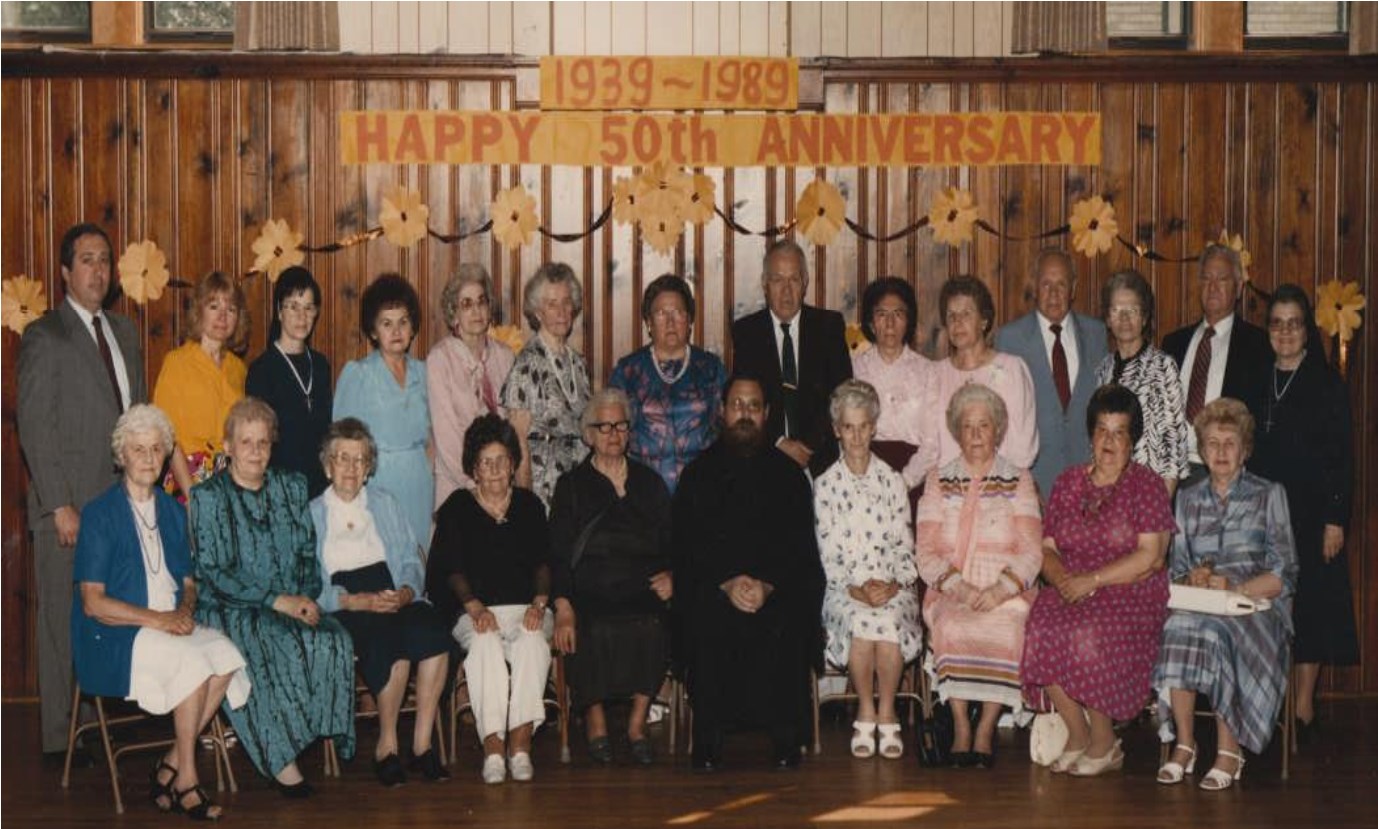
Rev. Vladimir Andrushkiw was transferred to the Ukrainian Catholic Seminary in Stamford, Connecticut, in September 1943, and Rev. Basil Feddish returned to serve the people but, again, for only a short time (less than three months). The Ukrainian Diocese of Philadelphia appointed Rev. Feddish editor of the diocesan newspaper, The Way, in November 1943. Rev. Joseph Schmondiuk succeeded Rev. Feddish on November 23, 1943, serving its members until being replaced by Rev. Walter Bilynsky on November 16, 1948. As the new church administrator, Rev. Walter Bilynsky found himself leading a parish that was growing quickly as hordes of new Ukrainian immigrants began to arrive following World War II. Many of these new families were sponsored through the efforts of Rev. Bilynsky and the St. Nicholas Parish community.
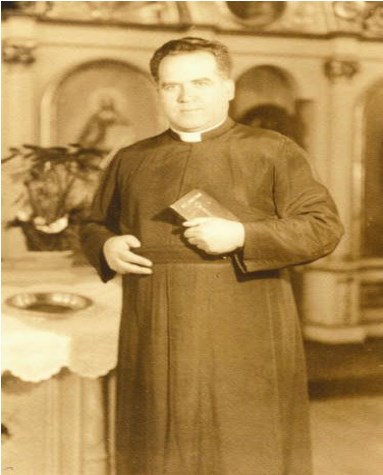
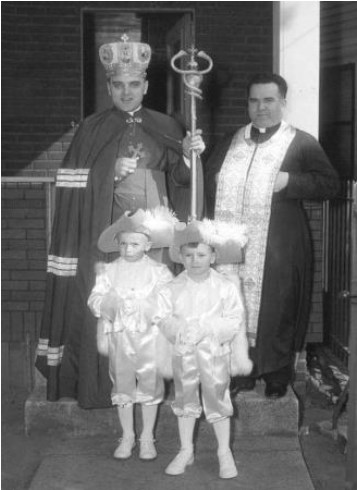
The parish was bursting at the seams by the mid-1950s. More space was needed and two multi dwelling houses were purchased—one served as a home for the assistant pastors and another was converted to a convent for our religious teachers, the Sisters Servants of Mary Immaculate. Additional facilities were also needed for the growing number of children enrolling in the parish school. In 1964 the former Daughters of Miriam Home for the Aged located on President Street, across from the existing school, was purchased and refurbished for that purpose. As might be expected from an energized, industrious pastor, the last lap in the parish’s drive to liquidate its debts was launched with great enthusiasm and, finally, the church became solvent.
New parish organizations sprouted up during this decade. Rev. Bilynsky felt our parish needed to blend with the Roman Catholic Rite churches and brought the Holy Name Society and the Knights of Columbus, two male-dominated organizations, to this Greek Catholic Rite church. These organizations flourished during those post-war years.
Not to be outdone, a diligent group of ladies organized a Ukrainian ‘kukhnya’ (kitchen) and began making pyrohy every week and even baking traditional breads (paskas, babkas) during the Christmas and Easter holiday seasons. The proceeds from these endeavors have consistently been one of the big money makers for the parish. These ladies’ pyrohy-making reputation attracts customers from the surrounding three counties. Their dedication to the church has funded many parish projects throughout the years and continues to make substantial contributions to the church coffers.
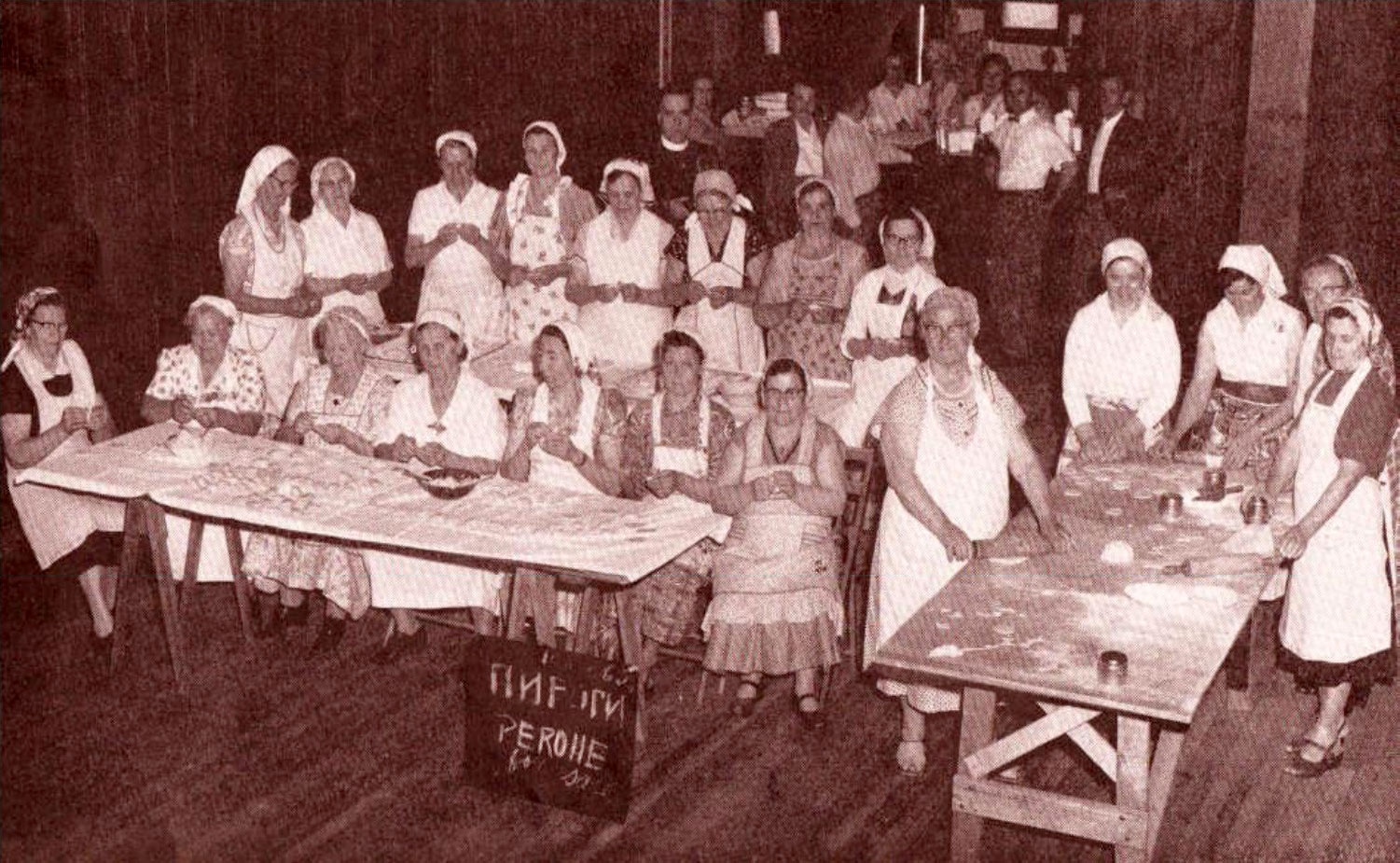
The 1960s were hectic times. The parish outgrew the Van Buren Street church building. The original edifice was sold to another Christian immigrant group in 1963, and the school auditorium located on 212 President Street was transformed into a temporary place of worship. Aggressive fund raising began. Land was needed for this new church project. The two homes adjacent to the parish school were purchased. Architects, engineers, and contractors were hired. The architect, Apollonius Osadsa, designed the plans for a much larger church building. Groundbreaking and blessing ceremonies were held in the summer of 1968 and the building project was initiated.
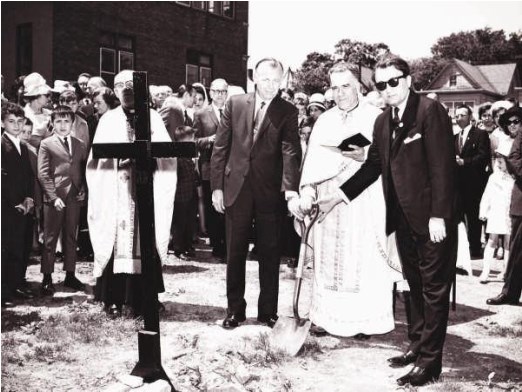
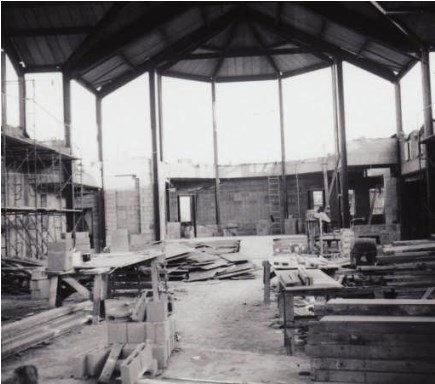
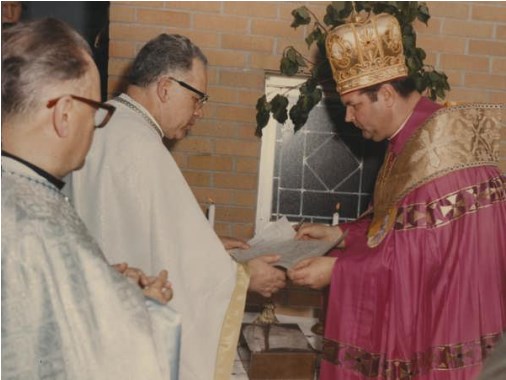
The faithful worshiped in the temporary lodgings for one and one half years as the project progressed. Although the interior was yet to be fully completed, the first Divine Liturgy in the new, and as yet incomplete church, was celebrated on Christmas Eve, December 24, 1969. The structure that now houses the St. Nicholas Ukrainian Catholic parish was blessed and dedicated by His Excellency Bishop Basil Losten on May 21, 1972. Patriarch Joseph Slipyj, head of the world-wide Ukrainian Catholic Church then located in Rome, graced our parish with a visit in the autumn of 1976. Clergy, religious, and laity gathered in great numbers to celebrate the occasion with a Pontifical/Solemn Divine Liturgy and a banquet held in His Excellency’s honor.
This same year a Studite monastery was established on the church property to house the monastics who were called to assist with the parish spiritual needs. Rev. Rafael Turkoniak, Ph.D., a Studite monk and ordained priest, arrived from Rome and was appointed assistant pastor in 1978. Brother Sebastian, Brother Alexander and Rev. Isidore, all of the Studite order, also served our parish during the ensuing years. The Studite Brothers helped complete the interior of the new monastic edifice and prepared the icons for the new iconostasis (installed in 1979).
Rev. Walter Bilynsky retired in May of 1982 after 34 years of service to God and to the St. Nicholas parish community. The duties of administration now fell to Rev. Rafael who assumed the role of principal of the parish school and invited the Sister Servants of Mary Immaculate resume teaching there. He also taught computer programming, a field just in its infancy at the time, and religion in the upper grades. So effective was Rev. Rafael’s teaching methods that the skills and abilities of St. Nicholas School graduates exceeded those of their public school counterparts by leaps and bounds. He saw the parish’s need for more space for spiritual and secular pursuits. Rev. Rafael and a core crew of parish volunteer workers began the arduous task of renovating the parish holdings which were in need of much repair; the monastery, the convent, and the two adjacent dwellings, as well as, the schools themselves. Working hand in hand with these enthusiastic and capable volunteers, roofing, windows and doors were replaced, and new heating and cooling systems were installed. Walls and ceiling were plastered and painted, and bath rooms remodeled. Hardwood floors worn away by years of foot traffic and dancing were torn up and replaced. Renovation of the old school hall opened up a source of revenue for the parish. Soon the hall was in demand for parish and community events. Fellow parishioners marked many a New Year’s Eve at the school hall, ever hopeful of a new and prosperous future. Throughout parish history, volunteers have been instrumental in attending to the physical needs of the church facilities and making the most of limited financial resources. The dedicated who assisted Rev. Rafael in these endeavors included Steve, Harry, and Michael Retkwa, Gregory Iwaniuk, Michael Fedoriw, Wasyl Skrypak, Peter Dobrovny, Ivan Orlovsky, Stephan Zadorozny, Theodor Chomyshak, Theodor Stec, Oleksa Demchko, Stanislaw Kowal, Stephan Lapiczak, Theodore Szereg, Ivan Blycha, Ivan Pokulak, Stephan Lobur, Slavko Dankiw, John Pelak, John Polowchak, Theodor Moskal, Wolodymyr Rudakewych, Bohdan Kobzar, and Bohdan Kramarchuk. Many are gone now but their memory is eternal and their work is evident even today.
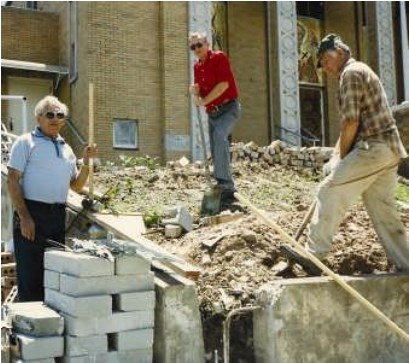
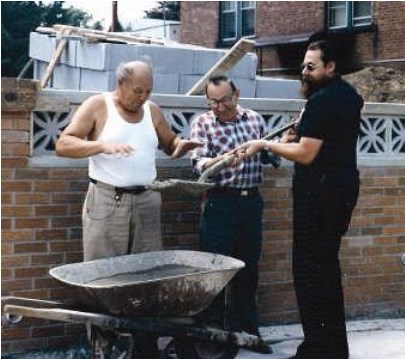
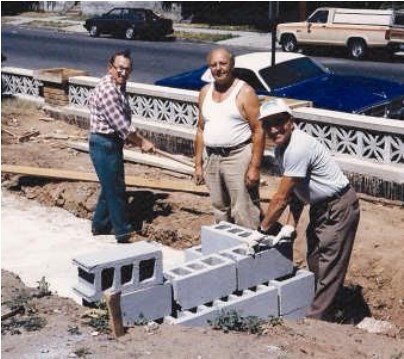
Rev. Hlib Lonchyna, another Studite monk, joined Rev. Rafael as assistant pastor in 1983.
Working together, the two priests brought about significant changes to the life of the parish. The Senior Club, the Young Adult Club, and the Sunday Catechetical Group were some of the new organizations formed to address the social and spiritual needs of the parish community. In the ensuing years there existed a unity in parish life the likes of which had not been previously known. Harmony among the generations superseded all, and all were bound by a common desire to see growth and prosperity in the parish community.
In 1985 St. Nicholas parish marked its 75th Jubilee year with a Pontifical Divine Liturgy celebrated by clergy and religious hierarchy, and at a gala banquet at the Westmount Country Club in Woodland Park (West Paterson). The parish was graced by Patriarch Josyf, Archimadrite Lubomyr Husar, Studite, Bishop Rodiemer of the Roman Catholic Dioceses of Paterson as well as civil dignitaries from Clifton, Passaic, and the surrounding areas.
Rev. Rafael completed his assignment at the parish in October 1990. The Studite monastery relocated from Passaic to Lviv, Ukraine soon after independence was declared in January of 1991. Rev. Hlib continued at the parish until his reassignment in August 1992. Monsignor Martin Canavan took over the pastoral duties in September 1992. A few months later, after a 25- year absence, Rev. Uriy Markewych returned to St. Nicholas parish. Rev. Uriy’s tenure concluded 1993, when a young priest named Rev. Joseph Szupa assumed the duties of the parish very soon after his ordination. Rev. Joe brought an innocent spirit back to the parish family. For the next eight years, he focused on the spiritual needs of the parishioners, both existing ones and the ‘newly arrived’ wave of immigrants from the now-independent Ukraine. Beginning in 2001, the parish has been blessed with priests from the native homeland. Rev. Paul Vasyl Repela served from 2001 to 2003, at which time Rev. Ihor Royik arrived from Ukraine via Canada to serve our community. Rev. Ihor, a married clergyman with children, brought warmth and a sense of Ukraine with him. (Married priests were the norm in Ukraine, unlike the celibate single priests who serve the Roman Rite Catholic communities.) The Royik children were in enrolled in the parish school and Pani Olenka, his wife, taught at the school. Rev. Ihor, well schooled in the English language, encouraged participation in local government and was himself appointed chaplain for the Passaic County Sheriff’s Department. In August of 2007, Rev. Ihor and his family were transferred to Melrose Park, Pennsylvania (PA), and Rev. Andriy Dudkevych arrived with his family in September of that year, also from Ukraine via the Edwardsville, PA parish. Rev. Andriy assumed the pastoral and administrative duties of with a youthful joy and zeal. As parish administrator, he sought to encourage and sustain the growth of the parish, both spiritually and economically.
As the Centennial Jubilee year approached, a committee was formed to organize the celebrations.
In advance of the Jubilee itself, a decision was made to finally decorate the church edifice in the manor that had originally been planned when the church was newly constructed. Iconographers were contacted, proposals were presented, and a selection was made. The overall costs seemed daunting, but eager volunteer organized a fundraising committee. Parishioners, friends, and supporters opened their hearts and their wallets with generous donations. The project was initiated in late 2008, and completion is anticipated prior to the October 24th gala celebration.
Since the parish’s humble beginnings, four waves of immigrants have been gently assimilated into American society here in Passaic. The first immigration of 1879–1914 was encouraged to come to these shores with the promise of a better life through hard work and honest living. These men and women helped build America by mining coal, farming the land, and working in the newly industrialized factories. The peoples of the second immigration of 1946–1952 were fortunate to escape a war-torn Europe and to come to the United States after World War II. Their homeland was closed to them and they had an intense desire to show the world that Ukraine was a separate culture unique onto itself and deserved its own, independent borders. The church was their haven and became the center of their community. It was with this wave of immigrants that many civic organizations were established to reinforce love and respect for a Ukrainian nation. The third wave of immigrants, who arrived in the 1960s, brought a new dimension to the need for worship and national pride. These men and women had not only lost their homeland, but were also being fiercely assimilated into the Polish nation. They brought with them a complimentary blend of humility and confidence to carry on the tradition of love of God and country through hard work and thankful prayer. The fourth wave of immigrants, which began in 1991, brings beauty and innocence to our shores. The people who belong to this group have been excluded and secluded from global affairs and global changes since the demise of the Czarist regime and the onset of communism at the turn of the twentieth century. This, newest immigration is catching up quickly to the fast-paced society that makes America thrive and prosper.
In preparation to celebrate the Centennial, we pause to reflect on the hundreds of selfless, industrious, and talented individuals who have been a part of its history—a history that began with its founders, was strengthened over the decades by their successors, and continues today with a new generation of creative and innovative members.

